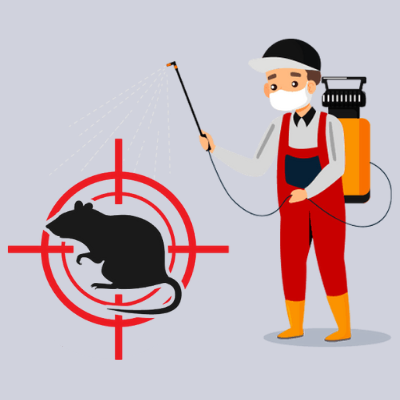How to Identify Different Rodent Species in Toronto?
Rodent infestations are a growing concern in Toronto, with various species of rodents causing havoc in both residential and commercial areas. Proper identification of the specific rodent species involved in an infestation is crucial for effective control and prevention. This article provides an in-depth look at the different rodent species found in Toronto and offers guidance on how to identify them accurately, emphasizing the need for targeted rodent control in Toronto.
Common rodent species in Toronto:
- Norway Rat (Rattus
norvegicus): Also known as the brown rat, this species is commonly
found in urban areas. It has a robust body, measuring about 16 inches
including the tail, with brownish or grayish fur. Norway rats are often
found in basements, sewers, and lower floors of buildings.
- Roof Rat (Rattus
rattus): Also called the black rat, it is smaller and sleeker than the
Norway rat, with a tail longer than its body. Roof rats prefer higher
elevations and are commonly found in attics, roofs, and trees.
- House Mouse (Mus musculus): A small rodent with a slender body, the house mouse has a pointed snout, large ears, and a long tail. They are light brown to gray in color and are commonly found in both residential and commercial buildings throughout Toronto.
Physical Characteristics to Look For:
Identifying rodents by their physical characteristics can help in
determining the appropriate control measures.
- Size and Shape:
Norway rats are larger and bulkier, while roof rats are smaller and more
agile. House mice are much smaller with a delicate appearance.
- Tail Length:
Roof rats have long tails that exceed the length of their bodies, while
Norway rats have shorter tails relative to their body size.
- Fur Color: Norway rats have coarse, brownish fur, roof rats are usually black or dark brown, and house mice have lighter brown or grayish fur.
Behavior and habit preferences:
Understanding the behavior and habitat preferences of each species can
aid in identification.
- Norway Rats prefer
burrowing and are often found in lower areas like basements or
underground. They are active during the night and can travel significant
distances in search of food.
- Roof Rats:
Known for their climbing abilities, roof rats prefer elevated areas like
roofs and attics. They are also nocturnal and tend to nest in higher
places.
- House Mice: Highly adaptable, house mice can live in a variety of environments but are most commonly found indoors. They are curious and will explore new areas, making them frequent visitors to kitchens and storage areas.
Signs of Rodent Activity:
Identifying signs of rodent activity can help determine which species
is present.
- Droppings:
Norway rats leave large, blunt-ended droppings, while roof rats have
smaller, spindle-shaped droppings. House mice produce small, rod-shaped
droppings.
- Gnaw Marks:
Norway rats leave large, rough gnaw marks, while roof rats and house mice
leave smaller, finer marks.
- Nests: Roof rats build nests in high places using shredded materials, while Norway rats burrow underground. House mice build small nests in hidden areas using soft materials like paper or cloth.
Importance of Accurate Identification in Rodent Control:
Proper identification of the rodent species is essential for effective rodent control in Toronto.
Different species require different control strategies:
- Targeted Trapping:
Knowing the species allows for the selection of appropriate traps and
bait. For example, roof rats may require traps placed in elevated areas,
while Norway rats need ground-level traps.
- Specific Baiting
Techniques: Certain rodent species are attracted to specific types of
bait, making it crucial to identify the species to use the most effective
bait.
- Preventive Measures: Understanding the habits and preferences of each species helps in implementing preventive measures, such as sealing entry points and eliminating food sources in a more targeted manner.
Professional Help for Rodent Control in Toronto:
Given the complexity of rodent identification and control, it is often
advisable to seek professional help. Experienced pest control professionals can
accurately identify the species involved and implement effective control
measures. In Toronto, professional rodent control services can provide
comprehensive solutions, including inspection, identification, trapping, and
long-term prevention strategies.
Accurate identification of rodent species is key to controlling infestations in Toronto. By recognizing the specific characteristics and behaviors of different rodents, residents can take appropriate steps to protect their homes and businesses from these persistent pests.
Click here
to learn more about rodent control services!


Comments
Post a Comment